How The Bomb Factory Art Foundation celebrates cultural fusion in Britain
Mark Hudson explores how a radical London arts charity taps into something that has been going on at grassroots level for 40 years

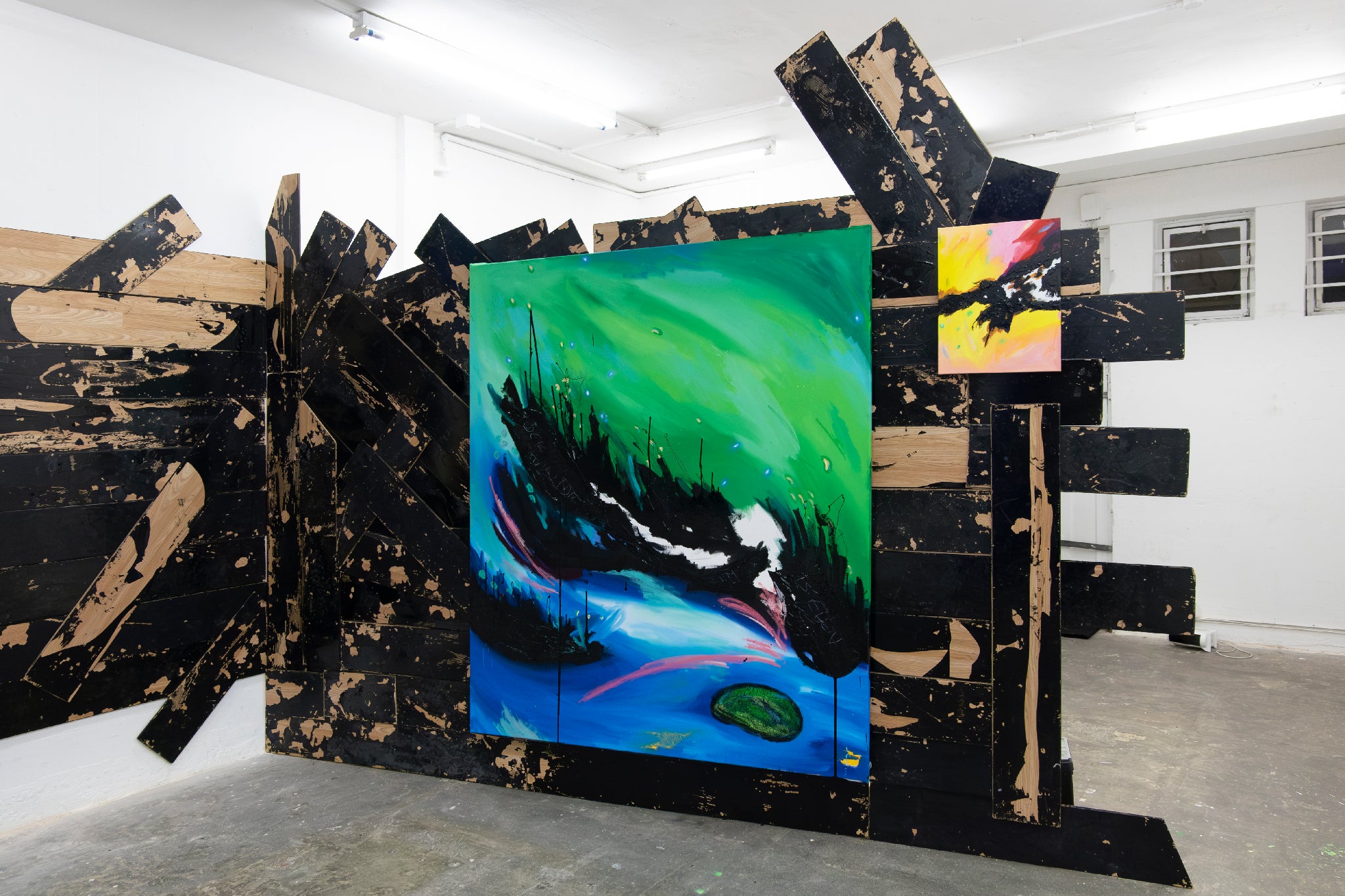
When, where and how are we going to really see the fruits of Britain’s much-trumpeted cultural diversity? The past decade has seen huge boosts in recognition for British artists of colour. And Lord knows, just about everyone, including our continental neighbours, seems to think we do this kind of thing better than anyone. Yet the time when we can all participate without guilt or self-consciousness in the artistic hybridisation and fusion that are the natural outcomes of immigration still feels a way off.
A new exhibition at The Bomb Factory Art Foundation in London’s Marylebone Road, however, argues that far from being a longed-for future ideal, this hybridisation has been going on at a grassroots level in Britain for a good 40 years. Generations of young British artists, musicians and writers have grown up regarding the free sampling, mixing and plain enjoyment of each other’s cultures as just what naturally happens.
“When you’re a creative kid, you seek out a scene among your peers,” says artist Zak Ové, whose work features in the show. “We’re talking about spaces that are homegrown and informal: clubs, record shops, street corners, fashion boutiques and, of course, people’s bedrooms.”
If that all sounds credible in Ové’s native Camden Town, Pallas Citroen, the show’s curator, who grew up non-white in rural Sussex, argues that this culturally promiscuous experimentation is far from an exclusively urban thing. “I lived in a small, very English town and my friends and I were all obsessed with Jamaican culture.”
Entitled One Nation Under a Groove, after the iconic Seventies anthem by Funkadelic, the show features an extraordinary array of artists, photographers, filmmakers and musicians from Jamaican, Trinidadian, Pakistani, Bangladeshi, African-American and even quite a few white British backgrounds. They range from the late Horace Ové (Zak Ové’s father), maker of the first Black British feature film, Pressure, in 1976, to John Hoyland, a leading figure in British abstract art, who produced a spectacular series of canvases in Jamaica, late in his career. There’s the current leading light of British abstraction Rana Begum, legendary punk DJ and filmmaker Don Letts, Booker Prize-winning novelist Ben Okri, and quite a number of artists who are still relatively early in their careers.
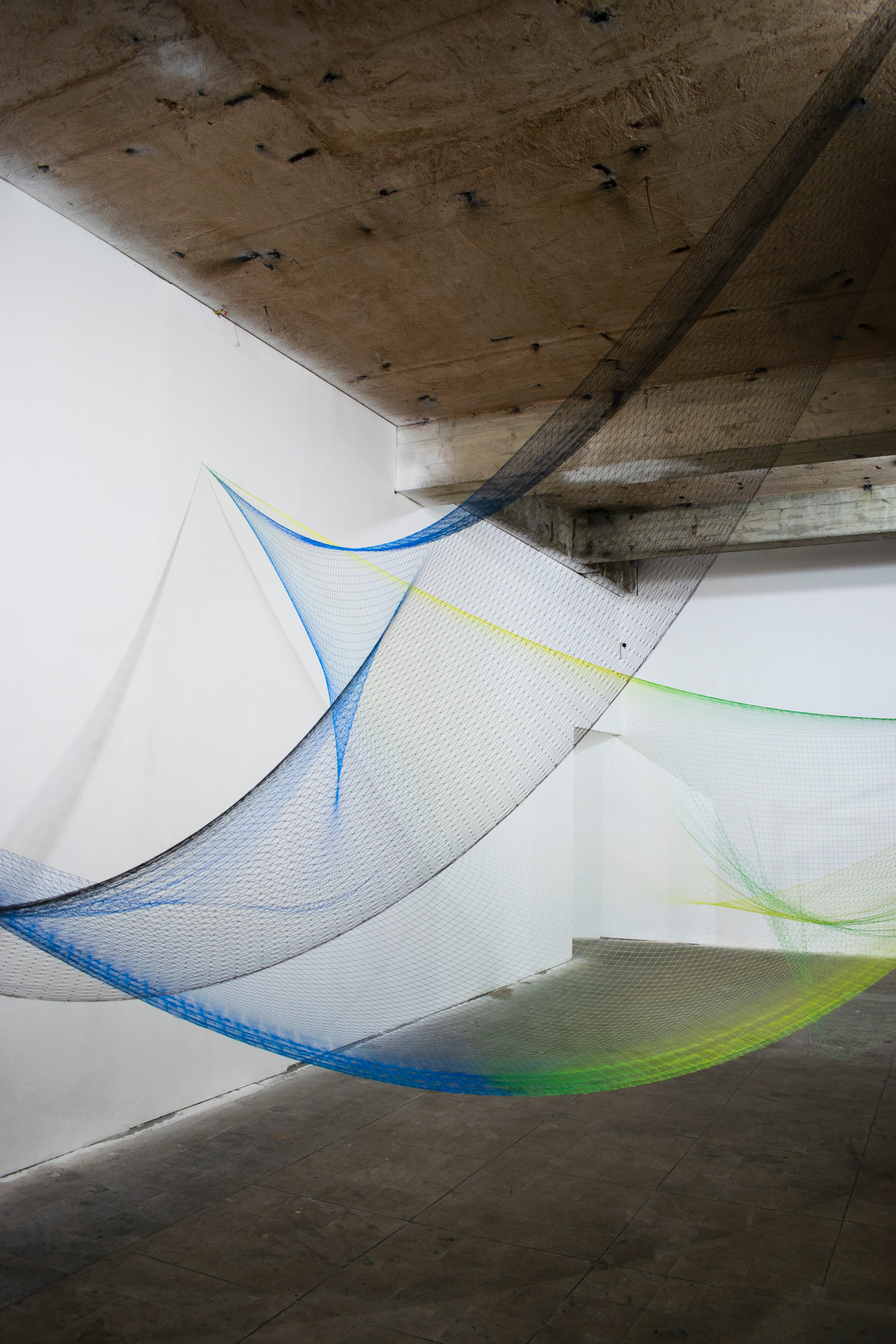
With all this diversity of form and heritage, isn’t the show’s title misleading? Shouldn’t it be called One Nation Under, well, Quite a Number of Grooves? “Not really,” says Citroen, “because the linking theme is that freedom to mix cultures that most switched-on people, of whatever age, simply accept as what British culture now is. That’s the groove we’re talking about. There are a lot of exhibitions now that only feature the work of Black artists or African-heritage artists or south Asian artists. That’s great when it’s about positive discrimination, but not so great when it becomes a form of segregation.”
A linking factor is that none of the work seems to settle easily into just one category, and music is a strong linking factor, whether it’s Bill Daggs’s rave-inspired abstract films or the words and rhythms feeding into Andrew Pierre Hart’s mysterious violet-drenched figurative painting or the pervasive influences of dub and EDM throughout the exhibition.
While it’s become a cornerstone of British popular culture that art and music naturally go together – from John Lennon to Ian Dury and Jarvis Cocker – that’s a narrative from which Black artists have until recently been notably absent. While mainstream British pop ruthlessly cannibalised Black music, the concepts of Black music and white music were subject to a kind of psychological apartheid in the mass-consumer consciousness until well into the 1970s. Black music was seen as earthy and of the street (with all the positives that implies) yet removed from the self-consciousness and complexity attributed to white rock. And all this despite the huge profiles and patent sophistication of great Black music innovators from Miles Davis to Stevie Wonder. The notion of Black contemporary art, meanwhile, simply didn’t exist for most people in the art world, let alone the population at large.
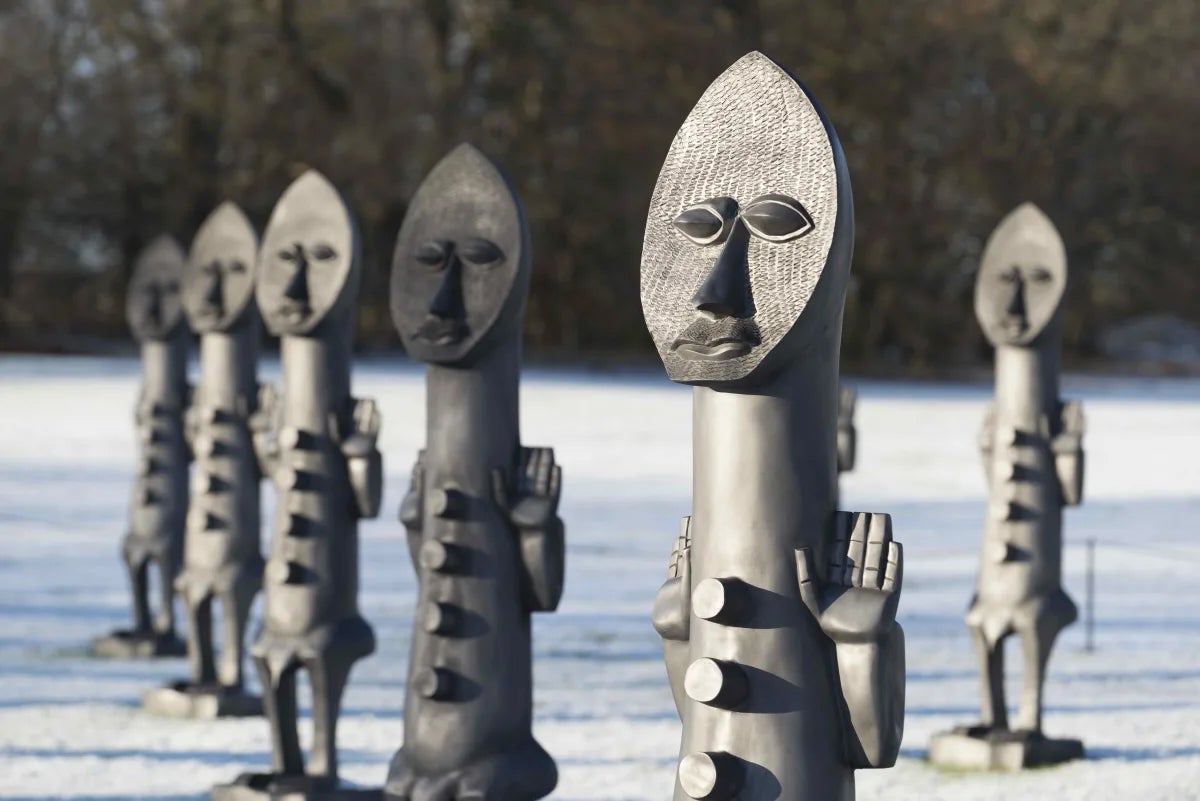
Things started to change with punk’s reggae obsession, and the gloriously impure mash-ups of The Clash, The Slits and Public Image Ltd. It was followed by 2 Tone, a ska-based retro fad that created a genuinely seismic shift in British pop, paving the way for a whole swathe of distinctively British art-soul-funk explorations from Rip, Rig and Panic with Neneh Cherry to Soul II Soul, Massive Attack and even Culture Club. The visual arts reciprocated with the emergence of the Black Art Group, a band of Midlands-based students determined to forge a space for the representation of Black British experience. While the movement’s insistence on a unitary Black identity might seem to go against the narrative of cultural fusing, the Black Art Group were fighting for their very existence in a hostile cultural landscape.
“You’re looking at something equivalent to the position of Black music in Britain pre-Motown,” says Zak Ové. “Of being almost completely nowhere. Then once the initial impact had been made, it just kept growing.” Several of the group’s members are now among Britain’s great flagship artists: from Sonia Boyce, who represented Britain at the 2022 Venice Biennale, to Claudette Jones, a favourite to win this year’s Turner Prize.
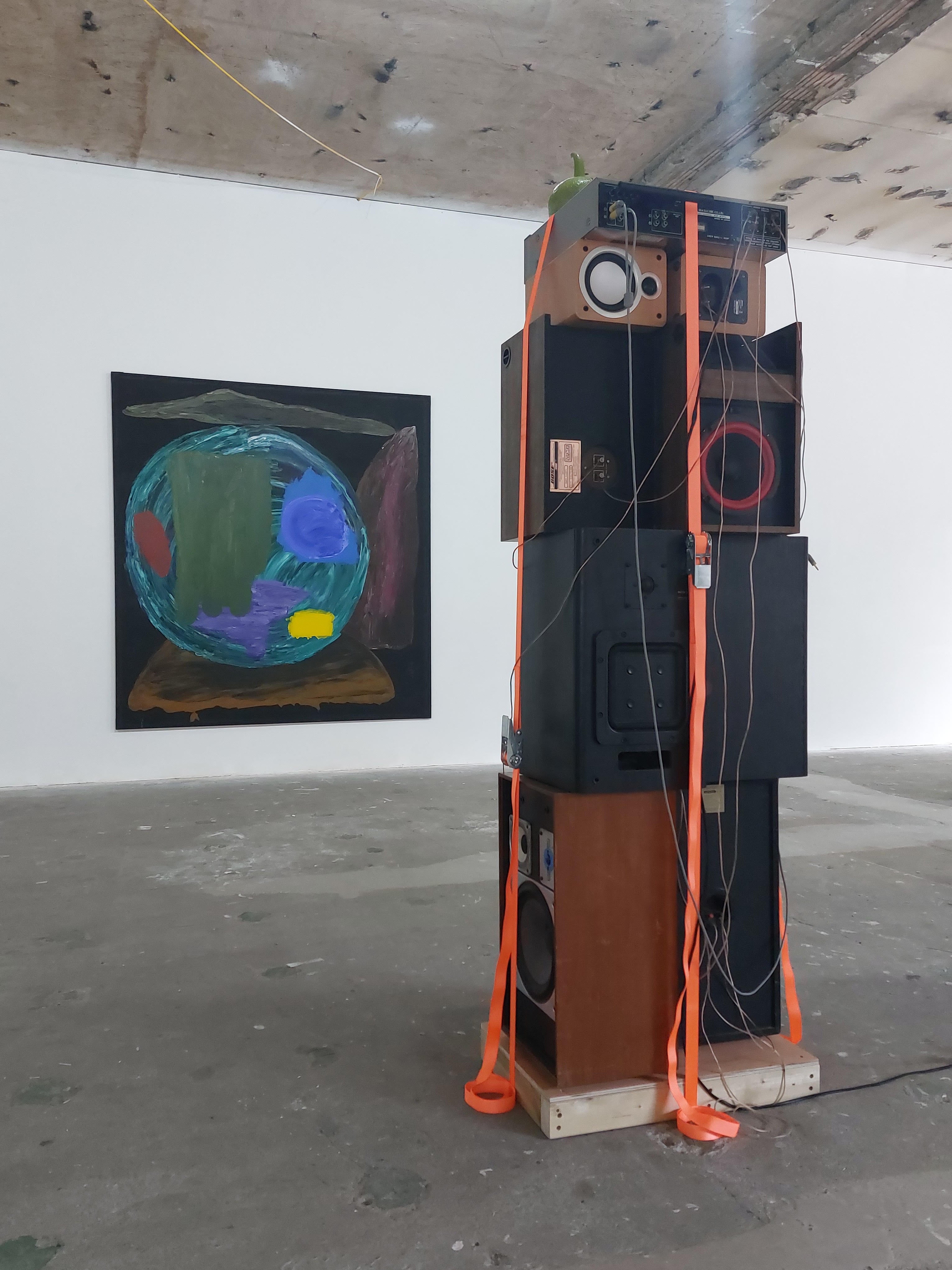
Artist Bill Daggs, whose films feature in the exhibition, came to art after a career as a hip-hop MC, and regards himself as a product, quite literally, of that pivotal early Eighties moment of cross-fertilisation.
“My dad was a sound engineer at Island Records, and worked on many of their classic reggae recordings, from the Wailers to Burning Spear. My mum used to go down to the studio, so I got a taste for heavy bass grooves when I was still in the womb.”
Daggs’s film Clash Riddim Pt 1 looks at a glance like some abstract “artist’s film” from the 1970s, though it takes its wildly deconstructed textures and psychedelic colour from clips of sound systems and raves purloined from TikTok and YouTube.
“It’s a ‘hauntology’ of British dance music,” Daggs says. “It chronicles all the key musical forms – dub, house, rave, drum and bass – as a series of lost utopias.”
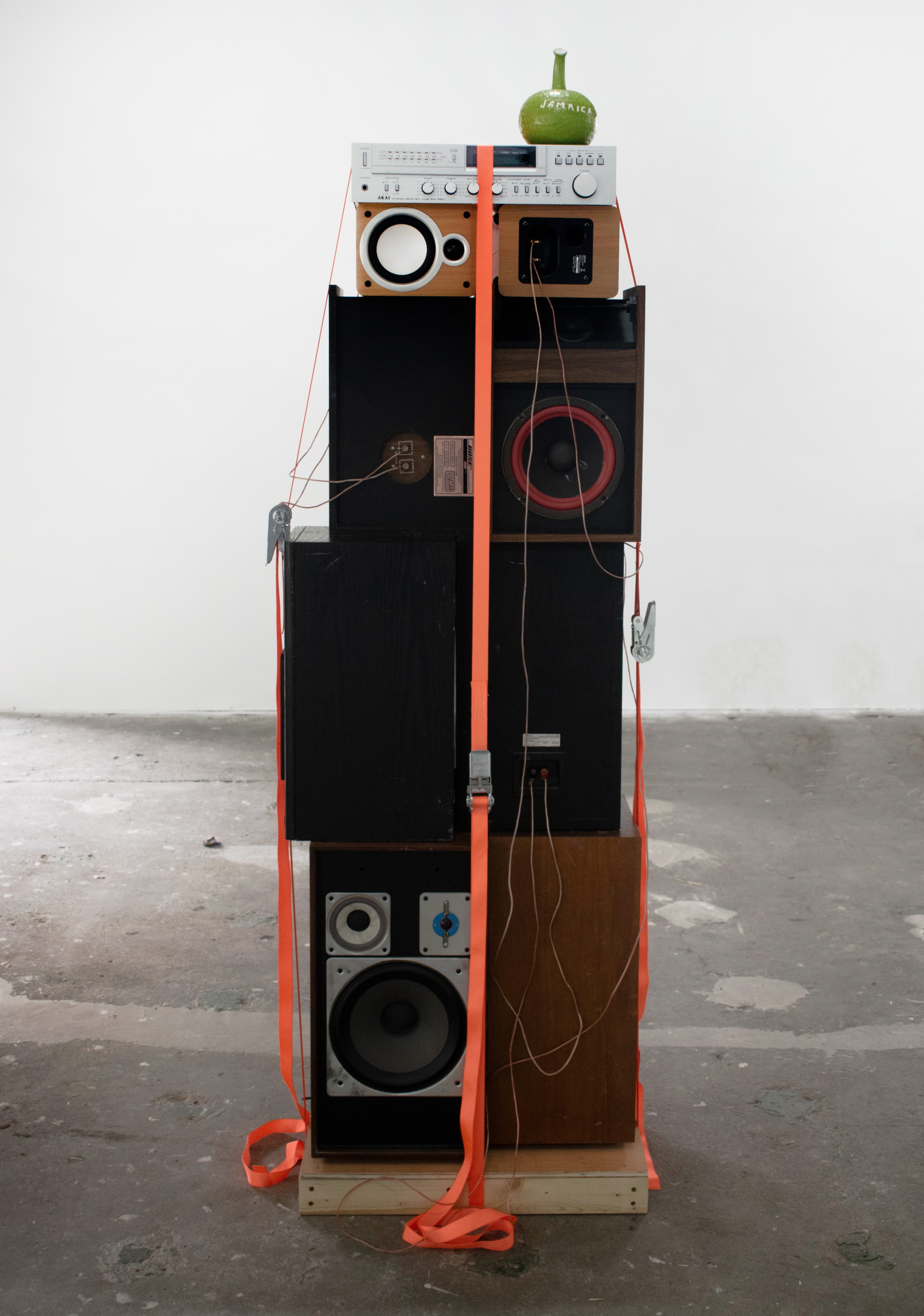
Linett Kamala, a lecturer at London’s prestigious Central Saint Martins College of Art, who was also the first woman to DJ at the Notting Hill Carnival, back in 1985, approaches the sound system from what she describes as a more “holistic” perspective.
“The sound system is a collaborative, intergenerational phenomenon,” she says. “It’s about a lot more than the typically male voice of the selector. I’m looking to restore the healing and ceremonial aspects of the sound system – though I’m not a Rastafarian – through the way the system is assembled and taken down, and in the way I curate the music. You’re not going to hear any N or B words on my sound system. There may be a place for that, but it shouldn’t become the norm.”
So how does the art aspect come in? “My sound system is a work of art in its own right. I made it myself with my team of young helpers.”
Citroen, whose own trajectory parallels the exhibition’s historical background, having dropped out of an anthropology degree to become a model and house music promoter before taking a sculpture MA at Central Saint Martins, regards the current proliferation of digital platforms as a hindrance – contrary to what you’d expect – to the kind of cultural interactions the show celebrates.
“People are terrified of stepping outside their own territory, of getting cancelled for appropriation or saying the wrong thing. And that becomes a form of censorship when it stops people dealing with issues they feel are outside their own cultural lane. The Eighties and Nineties scenes were intensely political, from Rock Against Racism to Greenham Common. But there are so many conflicting issues, questions and potential pitfalls today that people, particularly young people, are hesitant about making political art.”
Citroen founded The Bomb Factory, a charity providing artist studios and exhibition spaces, 10 years ago in a tiny former industrial facility in the Archway area of north London. The availability of former office and retail space in the aftermath of the pandemic has allowed it to expand into premises in Chelsea, Holborn and the impressive Marylebone Road space where the exhibition is taking place. Most have been acquired as “meanwhile spaces”, to be used before the owners find a more profitable use. With the art schools that formed the experimental crucible for art, and so much else, under threat from exorbitant fees that price the less wealthy students out of the process, Citroen believes that places like The Bomb Factory will have an increased role as venues for artists to meet and develop ideas.
“We have artists who haven’t been to art school but have arrived by other routes. We have people of all backgrounds and ages – not just the young. The art in the exhibition has its roots in so many places outside formal educational institutions. But at the same time, you need those central spaces, whether they’re colleges or studios, where people have the time and space to bring all their personal stuff together.”
‘One Nation Under a Groove’ opens at 206 Marylebone Road, London, on 5 October and runs until 31 October
Join our commenting forum
Join thought-provoking conversations, follow other Independent readers and see their replies
Comments
Bookmark popover
Removed from bookmarks